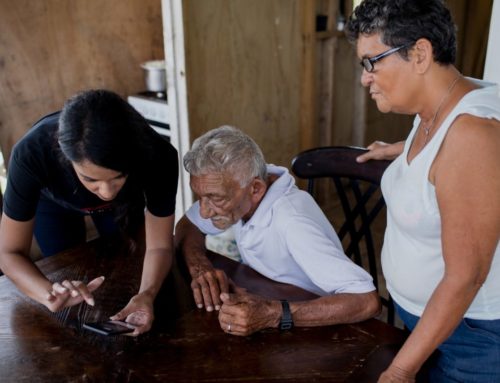Hospice respite care is a special type of short-term care designed to give family caregivers a much-needed break from their caregiving duties. When someone is caring for a terminally ill loved one at home, it can be physically and emotionally exhausting. Respite care offers temporary relief, allowing caregivers to rest, recharge, and attend to their own needs.
This type of care is usually provided in a Medicare-approved facility, such as a hospice inpatient unit, hospital, or nursing home. During respite care, the hospice patient receives the same level of care they would at home, including pain management, symptom control, and emotional support. The main difference is that trained professionals take over the caregiving responsibilities for a short period.
Respite care can last up to five days at a time, and it can be used more than once. It’s an essential part of the hospice benefit, recognizing that caregivers need support too. By providing this break, hospice respite care helps prevent caregiver burnout and ensures that patients can continue receiving care at home for as long as possible.
The Importance of Hospice Respite Care
Hospice respite care plays a crucial role in supporting both caregivers and patients during the end-of-life journey. For caregivers, it offers a chance to step away from the constant demands of caregiving, which can be overwhelming and exhausting. This break allows them to rest, attend to personal matters, or simply have some time to themselves. It’s not just a luxury; it’s a necessary part of maintaining the caregiver’s physical and mental health.
For patients, respite care ensures continuity of care even when their primary caregiver needs a break. It can also provide a change of environment, which some patients find refreshing. The professional care received during respite stays can sometimes lead to improved symptom management or new insights into the patient’s needs.
Moreover, hospice respite care acknowledges the importance of the family unit in end-of-life care. By supporting caregivers, it helps maintain the stability of the home care situation. This can ultimately lead to better outcomes for the patient, as a well-rested caregiver is better equipped to provide compassionate, attentive care.
Types of Hospice Respite Care
There are two main types of hospice respite care: inpatient respite care and in-home respite care. Each type serves the same purpose of providing relief for caregivers, but they differ in setting and duration.
Inpatient respite care is the most common form. It involves the patient staying at a Medicare-approved facility for up to five consecutive days. This could be a hospice inpatient unit, a hospital, or a nursing home. During this time, the patient receives round-the-clock care from hospice professionals. This type of respite care is ideal when caregivers need an extended break or when they have to travel or attend to other responsibilities that require them to be away for several days.
In-home respite care, on the other hand, brings temporary caregiving help into the patient’s home. This might involve a hospice nurse or aide staying with the patient for a few hours or even overnight. While less common, in-home respite can be a good option for patients who are uncomfortable with changing environments or for situations where the caregiver only needs a short break.
Both types of respite care aim to provide high-quality care for the patient while giving the caregiver time to rest and recharge. The choice between inpatient and in-home respite care often depends on the specific needs of the patient and caregiver, as well as the services available through the hospice provider.
Signs You May Need Hospice Respite Care
Recognizing when it’s time to use hospice respite care is crucial for maintaining the well-being of both caregivers and patients. Here are some signs that indicate you might need to consider respite care:
1. Physical exhaustion: If you’re constantly tired, having trouble sleeping, or experiencing physical symptoms like headaches or body aches, it may be time for a break.
2. Emotional burnout: Feeling irritable, anxious, or depressed can be signs of caregiver stress. If you find yourself losing patience or feeling overwhelmed by your emotions, respite care could help.
3. Neglecting personal needs: When was the last time you went to your own doctor’s appointment or spent time with friends? If you’re consistently putting your own needs last, it’s time to consider respite care.
4. Declining health of the patient: If your loved one’s condition is worsening or their care needs are increasing, you might need additional support to manage their care effectively.
Remember, using respite care isn’t a sign of weakness or failure. It’s a proactive step to ensure you can continue providing the best care possible for your loved one. Hospice respite care is designed to support both patients and caregivers, recognizing that caregiving is a challenging job that requires periodic breaks.
How to Arrange Hospice Respite Care
Arranging hospice respite care is typically a straightforward process, but it does require some planning. Here’s a step-by-step guide to help you set up respite care:
1. Contact your hospice provider: Start by reaching out to your hospice care team. They are your primary resource for arranging respite care and can guide you through the process.
2. Discuss your needs: Explain your situation to the hospice team. Be honest about why you need respite care and how long you think you’ll need it. Remember, it’s okay to ask for help.
3. Choose a facility: If you’re opting for inpatient respite care, your hospice provider will help you select an appropriate Medicare-approved facility. They may have partnerships with local hospitals or nursing homes.
4. Plan the timing: Decide on the dates for respite care. Remember, you can use up to five consecutive days at a time. Try to plan ahead when possible, but know that many hospice providers can also arrange respite care on short notice if needed.
5. Prepare information: Gather all necessary medical information, medication lists, and care instructions to share with the respite care team. Your hospice provider will help ensure a smooth transition of care.
6. Discuss with your loved one: If possible, involve your loved one in the decision and explain what will happen during respite care. This can help ease any anxiety they might have about the change.
Remember, hospice respite care is a benefit designed to support you. Don’t hesitate to use it when you need it. Regular breaks can help you provide better care in the long run.
Medicare and Hospice Respite Care Coverage
Understanding how Medicare covers hospice respite care is important for many caregivers. The good news is that Medicare does provide coverage for respite care as part of its hospice benefit.
Under Medicare, hospice patients are eligible for respite care for up to five consecutive days at a time. This care must be provided in a Medicare-approved facility, such as a hospital, hospice inpatient facility, or nursing home. Medicare will cover 95% of the Medicare-approved amount for respite care, leaving the patient responsible for the remaining 5%.
It’s important to note that there’s no limit to the number of times you can use respite care, but it’s typically only covered on an occasional basis. The five-day periods cannot be combined or saved up for longer stays. Each respite care stay must be arranged through your hospice provider.
Medicare’s coverage includes all the care needed by the patient during the respite stay, including room and board. However, transportation to and from the respite care facility is not covered by Medicare and may be an out-of-pocket expense.
Remember, to be eligible for this benefit, the patient must be enrolled in the Medicare hospice benefit. Your hospice team can provide more detailed information about Medicare coverage for respite care and help you navigate the process.
Paying for Hospice Respite Care
While Medicare covers a significant portion of hospice respite care, there may still be some costs to consider. Here’s a breakdown of potential expenses and ways to manage them:
1. Medicare co-payment: As mentioned earlier, patients are responsible for 5% of the Medicare-approved amount for respite care. This co-payment is typically small but can add up over multiple respite stays.
2. Transportation costs: Medicare doesn’t cover transportation to and from the respite care facility. These costs will need to be paid out-of-pocket.
3. Private insurance: If the patient has private insurance in addition to Medicare, it may cover some or all of the co-payment. Check with the insurance provider for details.
4. Medicaid: For those who qualify, Medicaid may cover costs that Medicare doesn’t, including the co-payment for respite care.
5. Charitable organizations: Some non-profit organizations offer financial assistance for hospice-related expenses. Your hospice social worker may be able to help you find these resources.
6. Hospice foundation support: Many hospice organizations have foundations that can provide financial assistance to patients and families in need.
If cost is a concern, don’t let it prevent you from using respite care. Talk to your hospice social worker or financial counselor about your situation. They can often help find solutions or additional resources to make respite care affordable. Remember, respite care is an important part of the hospice benefit, designed to support both patients and caregivers during a challenging time.
Benefits for Caregivers
Hospice respite care offers numerous benefits for caregivers, helping them maintain their own health and well-being while providing care for their loved ones. Here are some key advantages:
1. Rest and rejuvenation: Respite care allows caregivers to take a much-needed break, catch up on sleep, and recharge their batteries. This physical rest is crucial for maintaining the energy needed for caregiving.
2. Time for self-care: During respite periods, caregivers can focus on their own health needs. This might include attending medical appointments, exercising, or simply engaging in activities that promote relaxation and stress relief.
3. Reduced stress and burnout: Regular breaks can significantly reduce caregiver stress and prevent burnout. This can lead to improved mental health and a more positive caregiving experience.
4. Opportunity to maintain relationships: Respite care gives caregivers time to connect with friends and family, helping them maintain important social relationships that can provide emotional support.
5. Improved caregiving ability: A well-rested, less stressed caregiver is often better equipped to provide compassionate, patient care. Respite can help caregivers return to their duties with renewed energy and focus.
By taking advantage of hospice respite care, caregivers can ensure they’re taking care of themselves as well as their loved ones. This balance is essential for sustainable, long-term caregiving.
Benefits for Patients
While hospice respite care is primarily designed to support caregivers, it also offers several benefits for patients. Understanding these advantages can help alleviate any guilt or concern caregivers might feel about using respite services:
1. Professional care: During respite stays, patients receive round-the-clock care from trained hospice professionals. This can sometimes lead to improved symptom management or identification of new care needs.
2. Change of environment: For some patients, a short stay in a different setting can be refreshing and stimulating. It provides a change of scenery and potentially new social interactions.
3. Maintained quality of care: By allowing caregivers to rest and recharge, respite care helps ensure that patients continue to receive high-quality care at home in the long term.
4. Peace of mind: Patients often worry about burdening their caregivers. Knowing that their loved ones are getting a break can provide patients with peace of mind and reduce feelings of guilt.
5. Opportunity for socialization: In an inpatient respite setting, patients may have opportunities to interact with others, which can be beneficial for their emotional well-being.
Remember, the goal of hospice care is to provide the best possible quality of life for both patients and their families. Respite care supports this goal by ensuring that both caregivers and patients receive the support they need.
Frequently Asked Questions About Hospice Respite Care
Here are answers to some common questions about hospice respite care:
1. How often can I use respite care? Medicare allows for respite care as often as needed, but typically on an occasional basis. Each stay can last up to five consecutive days.
2. Can I choose where my loved one receives respite care? Your hospice provider will work with you to find an appropriate Medicare-approved facility. While you can express preferences, the final choice may depend on availability and your loved one’s care needs.
3. What if I need more than five days of respite? If you need a longer break, talk to your hospice team. They may be able to arrange alternative care options or additional support services.
4. Will my loved one receive the same medications and care during respite? Yes, the respite care team will follow the established care plan and continue all necessary treatments and medications.
5. Can I visit my loved one during respite care? Absolutely. While the purpose is to give you a break, you’re always welcome to visit if you choose to.
6. What if there’s an emergency during respite care? The respite care facility is equipped to handle medical emergencies. They will also be in contact with your regular hospice team.
Remember, your hospice provider is the best source of information for specific questions about respite care. Don’t hesitate to reach out to them with any concerns or queries.
Resources for Hospice Respite Care
There are numerous resources available to help you understand and access hospice respite care. Here are some valuable sources of information and support:
1. Your Hospice Provider: Your primary resource should always be your hospice care team. They can provide specific information about respite care options and help arrange services.
2. Medicare.gov: The official Medicare website offers detailed information about hospice benefits, including respite care. Visit their hospice care page for more information.
3. National Hospice and Palliative Care Organization (NHPCO): This organization provides resources and information for patients and caregivers. Visit their website at www.nhpco.org.
4. Caregiver Action Network: This non-profit organization offers support and education for family caregivers. They have resources specific to respite care at caregiveraction.org.
5. ARCH National Respite Network: This organization provides a national database of respite care providers and other caregiver resources. Visit archrespite.org for more information.
6. Local Area Agency on Aging: These agencies can provide information about local respite care options and other services for seniors and caregivers.
7. Support Groups: Many communities have support groups for caregivers of hospice patients. These can be great sources of information and emotional support.
Remember, knowledge is power when it comes to caregiving. Don’t hesitate to use these resources to learn more about hospice respite care and how it can support you and your loved one.
How to Find the Right Hospice Respite Care Provider
Choosing the right hospice respite care provider is crucial for ensuring your loved one receives quality care during your break. Here are some steps to help you find the right provider:
1. Start with your hospice team: They will have relationships with local respite care providers and can make recommendations based on your loved one’s specific needs.
2. Check Medicare certification: Ensure that any facility you’re considering is Medicare-certified for hospice care. This guarantees they meet certain quality standards.
3. Ask about staff qualifications: Inquire about the qualifications of the staff who will be caring for your loved one. They should have experience in hospice and palliative care.
4. Visit the facility: If possible, visit potential respite care facilities in advance. This can help you assess the environment and ask questions in person.
5. Understand the care plan: Make sure the respite provider can accommodate your loved one’s current care plan, including medications and treatments.
6. Consider location: Choose a facility that’s conveniently located, making it easy for you to drop off and pick up your loved one.
7. Read reviews: Look for online reviews or ask for references from other families who have used the respite care service.
8. Discuss communication: Understand how the respite care team will communicate with you during your loved one’s stay, especially in case of any changes or emergencies.
Remember, the goal is to find a respite care provider that gives you peace of mind while you take a break. Don’t hesitate to ask questions and express any concerns you may have. Your comfort with the respite care provider is just as important as your loved one’s care.



